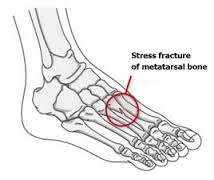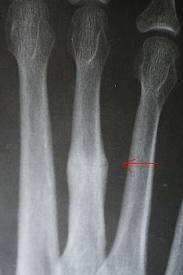Connect With Us
Stress Fractures
A stress fracture is a small crack in a bone. Stress fractures often develop from overuse, such as from high-impact sports like distance running or basketball. Stress fractures are sometimes called march fractures or fatigue fractures. So named because soldiers sometimes sustain the injury during prolonged periods of marching.


Most stress fractures occur in the weight-bearing bones of the foot and lower leg. Studies show that athletes participating in tennis, track and field, gymnastics, dance, and basketball are at high risk for stress fractures. In all of these sports, the repeated stress of the foot striking the ground can cause problems.
The most common sites of stress fractures are the second and third metatarsals of the foot. Stress fractures are also common in the heel (calcaneus), the outer bone of the lower leg (fibula), and the navicular, a bone on the top of the midfoot.
Stress fractures usually occur when you increase your high-impact activity by:
- Frequency (how often you exercise)
- Duration (how long you exercise)
- Intensity (your level of exertion)
People who do not exercise can also have stress fractures. If osteoporosis or other disease has weakened bones, normal daily activities may result in a stress fracture. This is called bone insufficiency. It is one of many factors that can increase your risk for stress fracture.
If you think you might have a stress fracture of your foot or ankle, contact one of the physicians at Academy Foot and Ankle Specialists to see what treatment is right for you.
